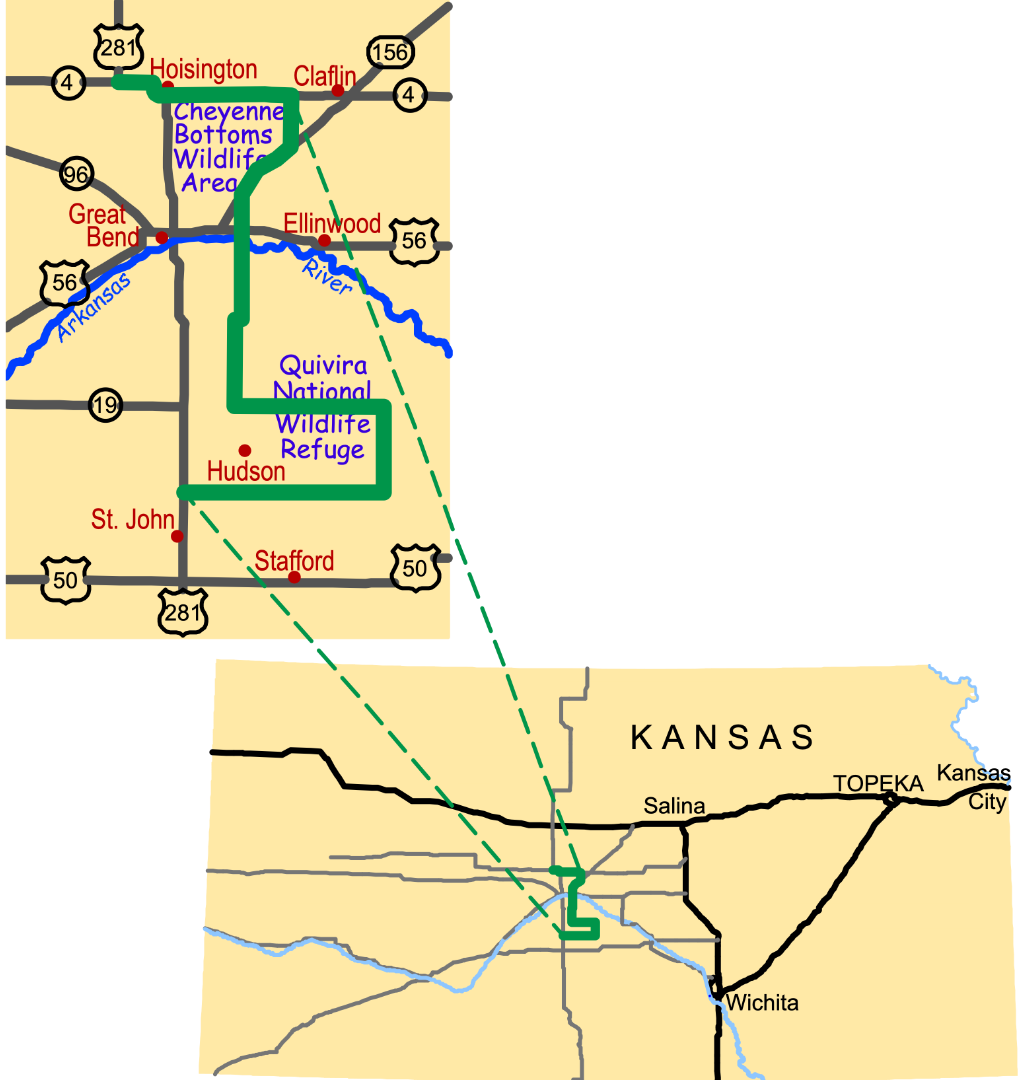Working...

Post Rock and Black Gold
Minerals Under the Prairie Sod
Imagine it's 1880, and you've just driven your family hundreds of wearying miles by wagon here to central Kansas. You're anxious to build a house, but you're surrounded by unbroken prairie-not a stick of construction-grade wood in sight. With what do you build?
Settlers quickly found the answer beneath their feet. First, they built their "soddies with blocks of prairie earth. Then, they discovered a more durable building material-limestone. Greenhorn limestone stretches beneath about three million acres of Kansas. This thin limestone layer, just 8-12 inches thick, yielded high-quality building material for homes, churches, bridges, and more. One common use for limestone was fence posts. Still visible along the Byway, limestone post rock once supported an estimated 40,000 miles of fencing in the state. Watch for the many enduring examples* of native limestone handiwork as you travel the Byway.
Kansas Crude
The industrial heartbeat of this part of Kansas is the "ka-thump ka-thump" of pumping units sucking crude oil out of the ground. Pumps dot the landscape along much of the Byway. Oil production began in this part of Kansas around 1930, peaking in the 1950s. Oil and gas production remains important to the regional economy; in 2006, more than 3,200 oil wells and 177 gas wells operated in Barton and Stafford Counties.
Motion and Change
Can you smell the ocean? Well, maybe not now, but several times over the past 300 million years, you could have. Seawater brimming with corals, shellfish, and other marine life periodically submerged this land. As organisms died, they accumulated on the ocean floor. Over time and with pressure, shells became limestone and organic materials transformed into oil and gas.
Download the interpretive panel: Post Rock and Black Gold Panel located at the Ellinwood City Park.
To listen to more information click on the Audio Tour Track #5
Go to the Gallery to view photographs contributed by visitors to the Byway.
* Enduring Examples of Limestone Handiwork
Just north of Claflin, you'll find several historic bridges crafted with locally quarried limestone. Each was constructed during the 1930s and early '40s by the Work Projects Administration. Though limestone had largely fallen from widespread use by that time, as easier-to-use materials came on the market, the Great Depression kindled a brief renaissance in local limestone construction since it was readily available and low-cost. In Ellinwood, visit St. Joseph's Catholic Church, an outstanding example of native limestone construction. Topped by a 150-foot-high steeple, this church was built in 1902 of limestone quarried near Odin, Kansas.
More Geology pages...
No Trees Allowed
Cultivating America's Bread Basket



